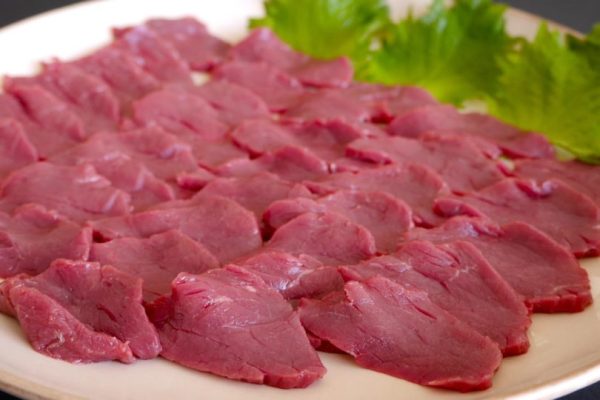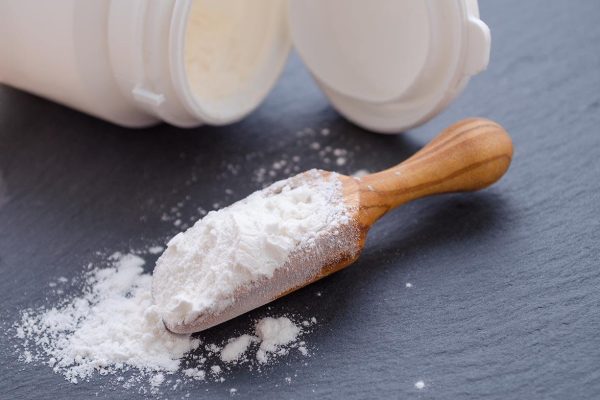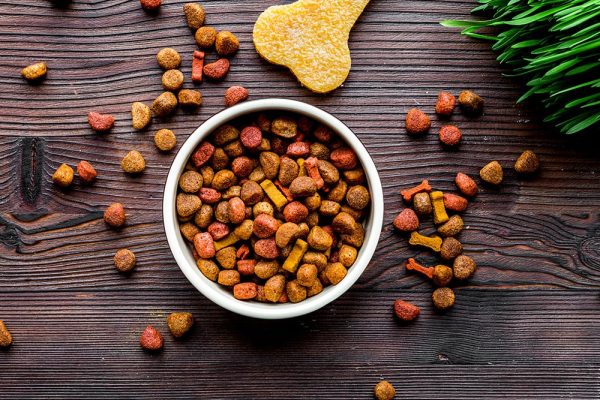In this article
View 8 More +The loyal and loving Golden Retriever crossed with the Labrador (also known as the Goldador) is a great medium-sized family dog that gets along well with other pets and families with children. Both parent breeds are best known for their roles as guide or service dogs due to their high intelligence and obedience.
Breed Overview
Height:
21–25 inches
Weight:
55–70 pounds
Lifespan:
10–12 years
Colors:
Yellow, cream, golden
Suitable for:
Active families with other dogs and children
Temperament:
Loyal, protective, active, docile
The Golden Labrador Retriever is a cross between two of the world’s most commonly owned dog breeds, making this mix plentiful and distributed worldwide.
Golden Labrador Retriever Characteristics

Golden Labrador Retriever Puppies
Golden Labrador Retrievers are loyal and will make the perfect addition to your family if you have kids and other dogs. They are protective companions.


Temperament & Intelligence of the Golden Labrador Retrievers 🧠
Both Goldens and Labs are sweet, sociable dogs that have a loving and gentle nature. This means the Golden Lab mix will likely also get along with everybody. Furthermore, their parent breeds are incredibly intelligent and are commonly used in jobs that assist humans, so it’s quite likely that Goldador will be good at such tasks too.
Are These Dogs Good for Families? 🏡
The Golden Labrador Retriever is a loyal companion, babysitter, and best friend. These characteristics make this breed perfect for families with both young and older children. They are patient and rarely show any signs of aggression unless provoked. In most cases, this dog is docile and can easily be trained to fit into a variety of different households.
However, there are commitments to keeping such a highly intelligent and active breed in your home. They need plenty of love, attention, and walks and a good diet. Their ease of care also allows this dog to fit into growing families, as they are good at adapting to everyone’s needs.
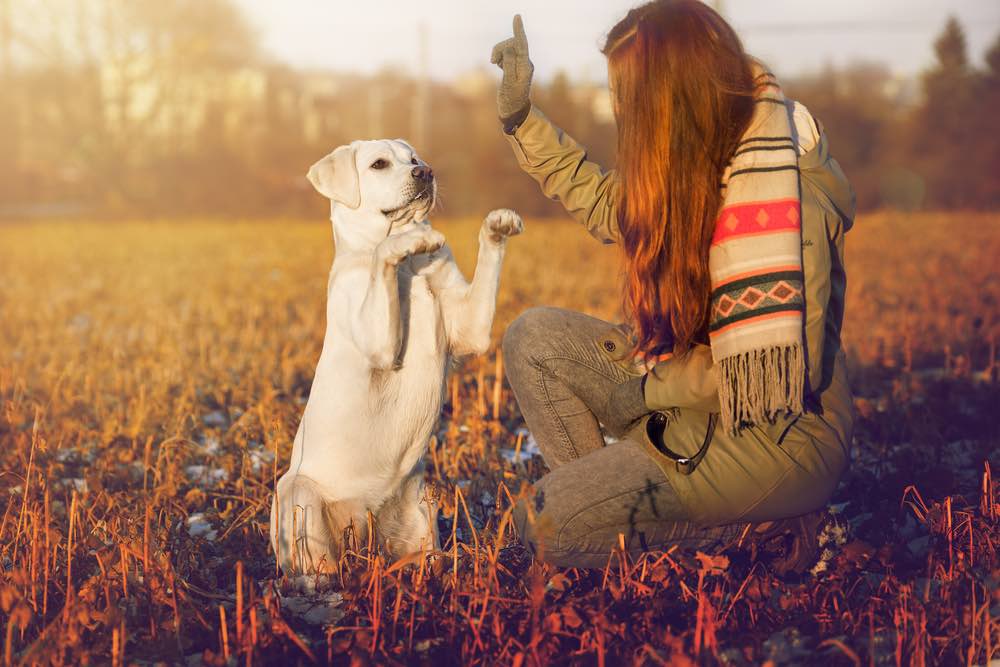
Does This Breed Get Along With Other Pets? 🐶 😽
Labs are usually good with other dogs, especially if they have been socialized from a young age. However, since Labradors are good at adapting to their environment, they are welcoming to strange submissive dogs.
It is always a good idea to slowly introduce your Golden Labrador Retriever to any new puppies and dogs that will be joining the household. This can be done by placing both dogs on a leash and letting them sniff each other. You’ll want to avoid skipping this step if your Golden Lab is particularly protective over their family, as they may see other dogs as a threat. The introduction phase can be beneficial to help your Golden Lab overcome their protectiveness.
Overall, most Golden Labrador Retriever owners have no problem socializing their Lab with other cats and dogs, whether it’s outdoors during a walk in the park or your own home. Golden Labs are particularly accepting of having cats join the household and commonly share a connection with them. It’s not uncommon for a Golden Lab to bark and excessively sniff and follow new cats, as they are still becoming familiar with having them in the family.
You should be cautious when keeping this breed with smaller pets such as hamsters, guinea pigs, and rabbits, though. Golden Labs naturally have a strong hunting instinct due to their ancestors being game hunters. They may see these smaller animals as food rather than pets in the household. Always keep small pets’ enclosures secure and away from areas of the household where your Golden Lab could access them.

Things to Know When Owning a Golden Labrador Retriever:
Food & Diet Requirements 🦴
A good diet for Golden Labrador Retrievers is a protein-rich diet consisting of 18–22% protein. They should also obtain nutrients from fruits, vegetables, and grains. Ensuring that your Golden Labs diet has the right balance of proteins, fats, vitamins, minerals, and fiber is important for optimum health and longevity.
Since this breed is prone to obesity, their diet should be low in fats and higher in protein. The fat in their diet can be increased if your Golden Lab is particularly active, as they will need a higher percentage of fat and protein as fuel. Puppies will require a higher percentage of protein (between 20% and 22%) during the first year when they do most of their growing, whereas older Golden Labs require slightly less protein.
It is best to speak to a veterinarian to determine your Golden Labrador Retriever’s ideal diet, whether it be a commercial diet or a homemade raw diet. Your veterinarian can direct you to a diet for your Golden Lab that caters to any conditions they may be prone to, such as obesity, bloating, or skin conditions.
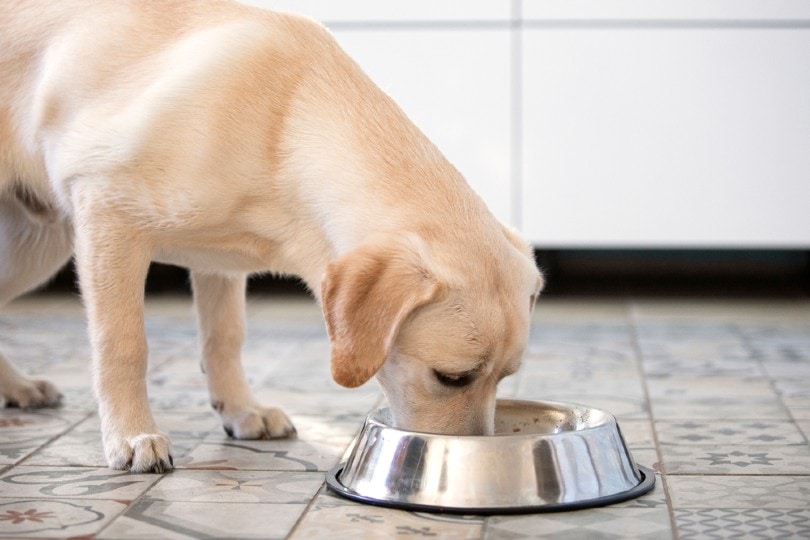
Exercise 🐕
Ensuring that a Golden Labrador Retriever can exercise daily is important for their health. Since this dog breed is prone to obesity, they must have a daily exercise routine to keep them fit and in shape. A healthy, adult Golden Lab needs between an hour and two hours of exercise a day, whether it is going on walks, playing fetch in the park, swimming, or playing with other dogs.
This dog breed enjoys a variety of different activities, which makes it easy to find an exercise routine that works best for your Golden Lab. If you find that you and your family are out most of the day, whether at school or work, then you may struggle to keep your Golden Lab active, which can lead to these dogs becoming bored and obese, which affects both their mental and physical health.
Of course, the amount of exercise they receive depends on their personality, as young Labrador puppies are more active and exploratory in comparison to older Golden Labrador Retrievers.
Training 🦮
Most Golden Labrador Retrievers love to learn new things, which makes training easy. This loyal and eager-to-please breed can be taught a variety of tricks and even be made more obedient. You can take advantage of their innate trainability by starting them on an obedience training program, especially while they are still in the puppy stage.
You can either work on obedience commands on your own or sign up for an obedience class with a local trainer. A benefit of taking your pet to obedience training schools is that they get to socialize with other dogs and people, and it’s also quality bonding time for you and your dog.
Grooming ✂️
Golden Labrador Retrievers have minimal grooming requirements, but they must get groomed weekly to help remove loose hair that would otherwise be shed around the house. Grooming also helps keep their fur well-maintained, removes dirt and oil, and keeps their nails at a decent length.
This breed sheds quite a lot of hair, and they are not hypoallergenic. Their shedding should be controlled with weekly brushings, and you can take them to a pet grooming parlor where they can be professionally washed, brushed, and trimmed and have their nails cut. If you are experienced at grooming dogs, you may be able to do the grooming at home by yourself, but you should take caution when trimming their nails and seek guidance from a veterinarian if you plan to cut them yourself.

Health and Conditions ❤️
- Retinal dysplasia
- Central progressive retinal atrophy
- Hot spots
- Obesity
- Cataracts
- Cancer
- Hip, elbow, knee, shoulder dysplasia
- Osteochondritis dissecans
- Patellar luxation

Male vs. Female
It is believed that male Golden Labrador Retrievers are more affectionate than female Labradors, but females will rarely shy away from affection. The difference between the two sexes is seen more so in the shape of their body than temperament, though female Golden Labs can be more independent.
Male Labradors are much taller and sleeker than females, whereas females are stockier and lack the slender legs and defined necks of their male counterparts.

3 Little-Known Facts About the Golden Labrador Retriever
1. Golden Labs love the water.
Golden Labs were built for the water! Their thick tail (also referred to as an “otter tail”) is used as a powerful rudder to help them swim through the water alongside the help of their webbed feet. A Golden Labrador Retriever also has a thick waterproof coat that works as an insulator to help them swim in icy cold waters.
2. They are purpose-bred hunting dogs.
Labradors started as duck retrievers, and after they were brought back to England in the 1800s, the British then bred them as game-hunting companions. Today, they are excellent dogs that can be in a variety of different environments to retrieve (hence their name) game like waterfowl and larger animals and work for hours at a time.
3. Golden Labrador Retrievers are among the world’s most versatile workers.
Thanks to the Golden Labs’ intelligence, eagerness to please, and loyalty to their work, this breed is a valuable worker in a variety of fields. They are popular service, drug detection, therapy, and search-and-rescue dogs.

Final Thoughts
A Golden Labrador Retriever may be right for you and your family if you can provide this breed with a high-quality diet, plenty of attention, exercise, and meet their grooming requirements.
This dog can easily fit into a household with children and other animals if they are introduced and socialized together from a young age. Overall, the Golden Labrador Retriever is playful, loyal, and easy to train, making them a great breed for a variety of households!
You may also want to read:
Featured Image Credit: idahoharleydude, Pixabay


